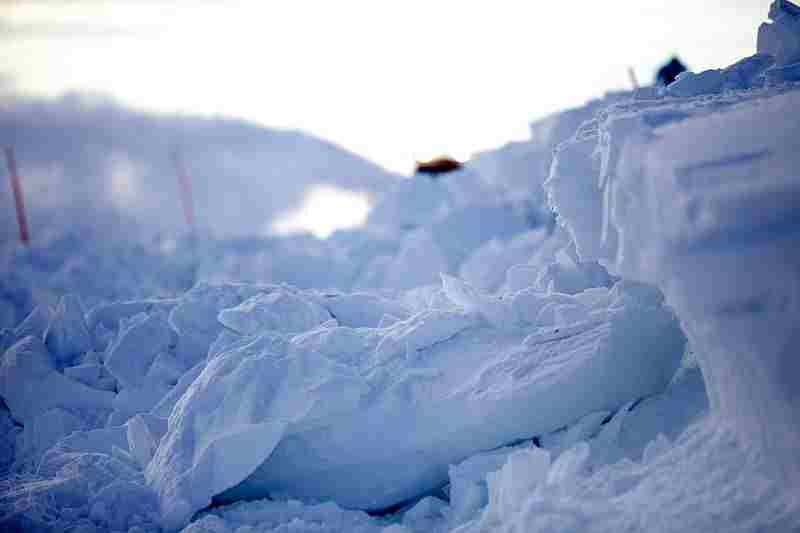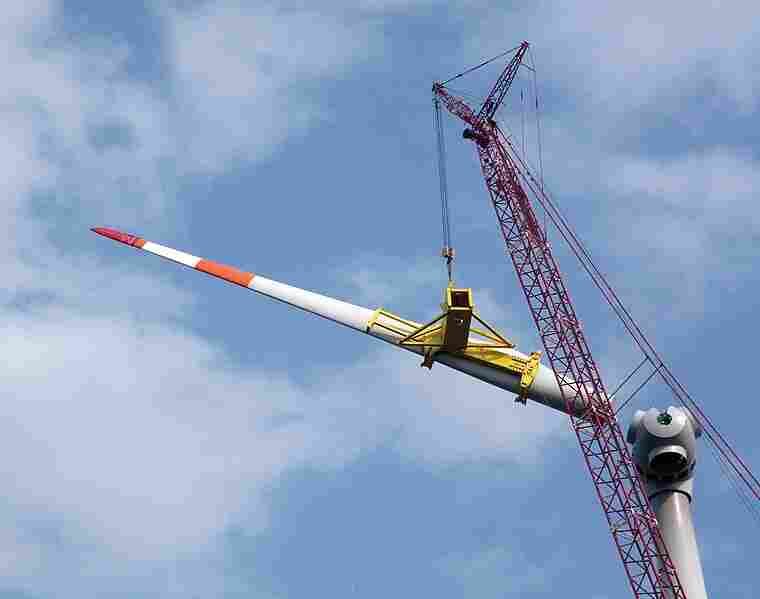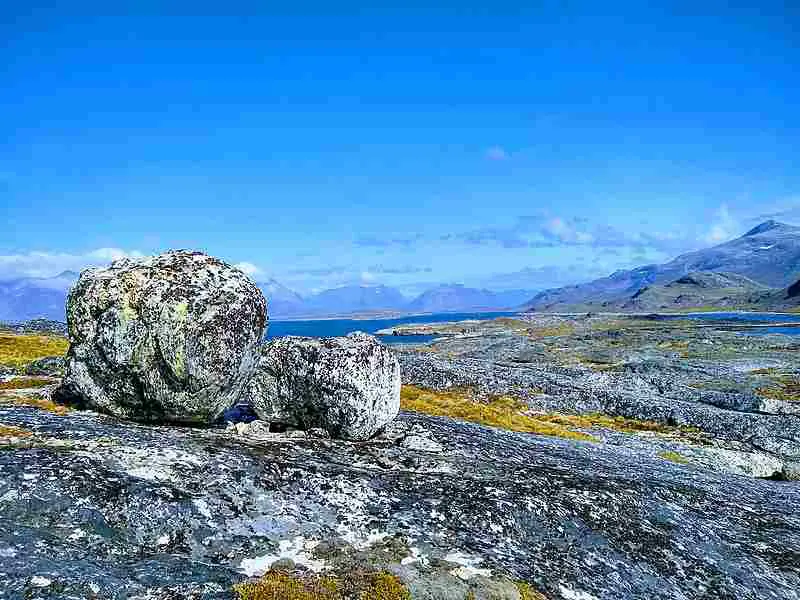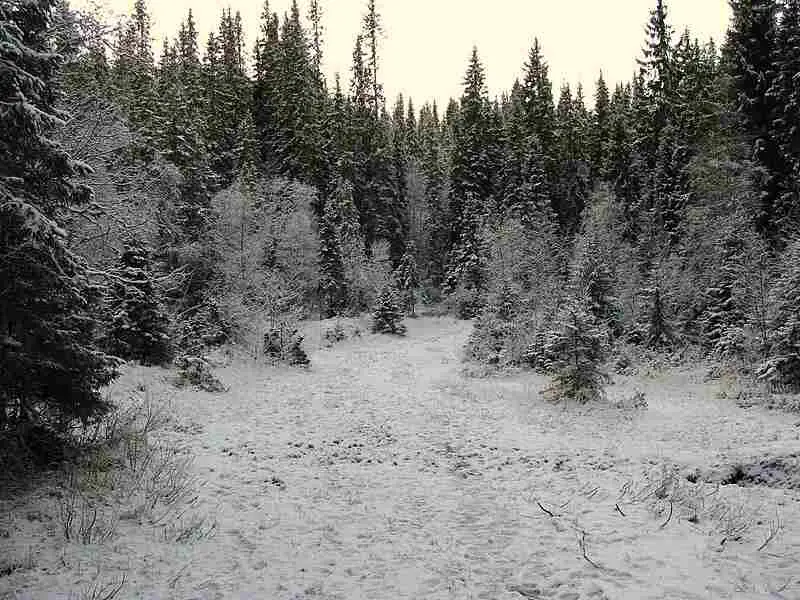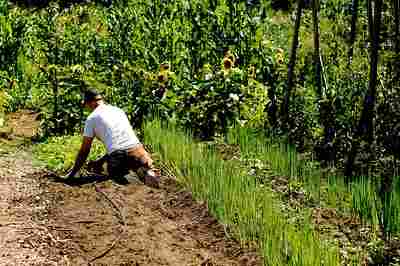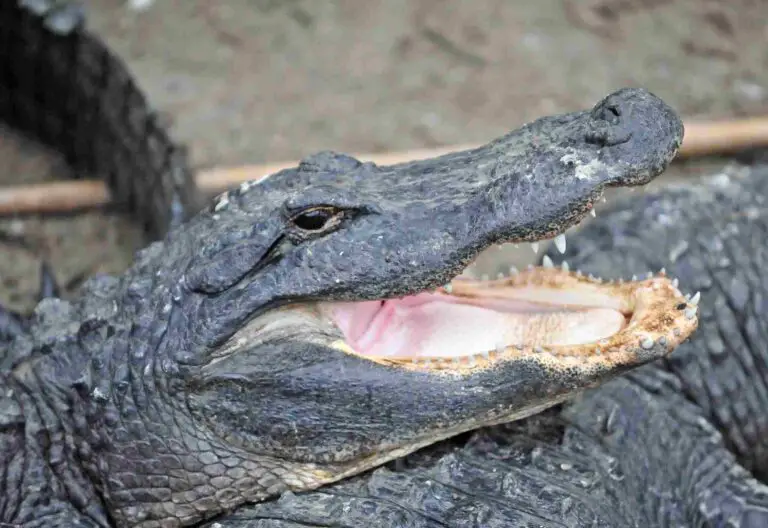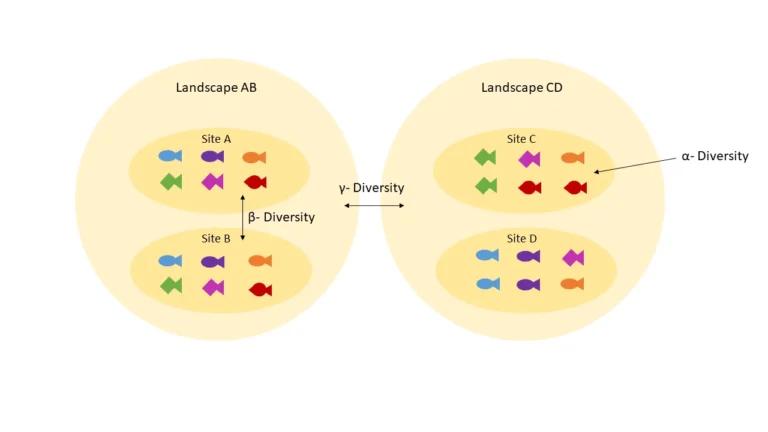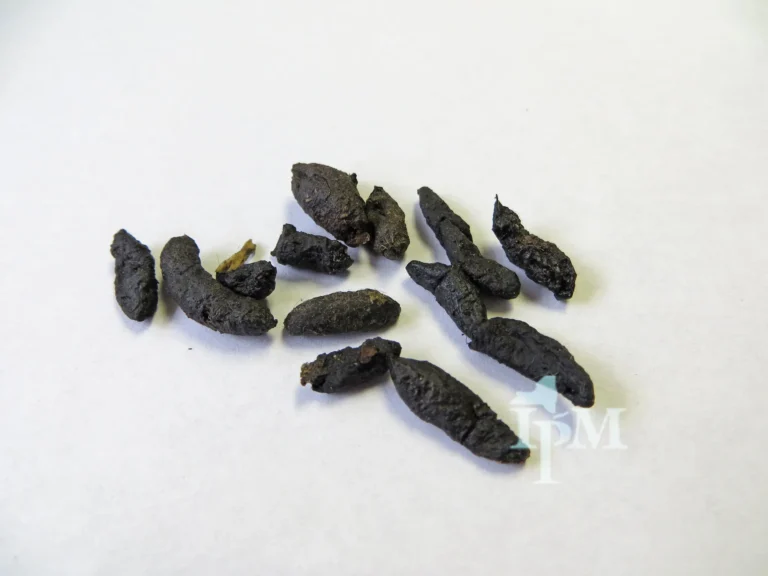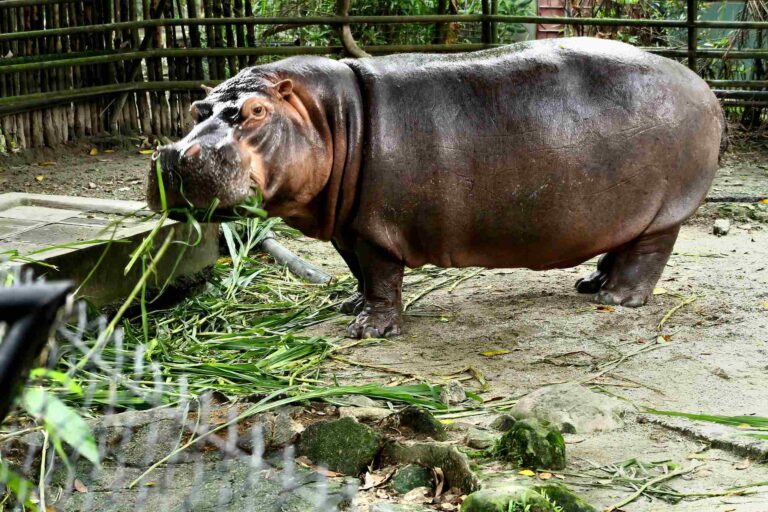7 Abiotic Factors in Antarctica and Their Characteristics
Abiotic factors in Antarctica are; precipitation, sunlight, soil, water, wind, physicochemical parameters, and permafrost.
This article discusses abiotic factors in Antarctica and their characteristics, as follows;
1). Precipitation (as one of the Abiotic Factors in Antarctica)
Precipitation in Antarctica is an important abiotic factor that is fully involved in shaping the region's climate and landscape.
Although it is referred to as the coldest and driest continent on Earth, Antarctica does receive some amount of precipitation, primarily in the form of snowfall [6].
This precipitation, while being relatively low, has significant implications for the overall climate and environmental conditions within Antarctica.
Maritime Climate and Summer Precipitation
Antarctica's climate is heavily influenced by its maritime environment.
Coastal zones experience a maritime climate due to their proximity to the surrounding Southern Ocean.
During the summer months, when temperatures are comparatively less severe, there is an increase in precipitation [13].
This can include snowfall and even occasional rain in some coastal regions, especially around the Antarctic Peninsula. The maritime climate ensures that there is a certain level of moisture in the air, leading to high relative air humidity, which can range from 80% to 90%. Such conditions results in snowfall, and contribute to the accumulation of ice on the continent.
Contribution of Precipitation to Antarctic Climate and Environment
Precipitation in Antarctica can be traced to multiple phenomena like; ice sheet-formation, glacier movement, climate feedback loop, sea level regulation, snow-melt and runoff.
With regards to ice sheet-formation, precipitation in the form of snow is a vital component in the formation of the massive ice sheets that cover the Antarctic landscape.
Over time, successive layers of snow compact and turn into ice, thereby contributing to the growth of these ice sheets.
The accumulation of snowfall at higher elevations contributes to the kinematics of glaciers. As snow compacts and transforms into ice, the weight which it exerts causes the ice to flow downslope, ultimately contributing to the movement of glaciers towards the coast. In extreme cases this may lead to hazards of mass movement, like avalanches.

Energy balance on Earth is affected by the presence of ice and snow in Antarctica. The high albedo (or reflectivity) of ice, causes a significant portion of solar radiation to be reflected back into space, contributing to regional cooling. This also influences local and global climate patterns.
Formation of ice from precipitation in Antarctica, affects global sea levels. This is because as oceans freeze and ice accumulates, it stores water that would otherwise be in the oceans, thereby reducing the mean sea level [9].
While most of Antarctica's interior receives very minimal precipitation, some coastal regions have higher precipitation levels that allow them support unique ecosystems, including organisms like mosses and lichens. These areas thrive on the relatively-high availability of water from precipitation to sustain life.
Summer precipitation in warmer coastal areas may contribute to snowmelt, which produces temporary water sources that support wildlife during the short growing season.
2). Sunlight
Sunlight is a critical abiotic component that has significant influence on the ecosystem(s) of Antarctica.
Owing to the unique positioning of the continent, sunlight availability varies dramatically throughout the year, playing a pivotal role in shaping the environment, and influencing the life forms (biotic factors) that can thrive in this extreme ecosystem.
Seasonal Variation in Antarctic Sunlight
Antarctica experiences extreme seasonal variation in sunlight due to its location at the South Pole.
During the austral summer that broadly spans from late September to late March (other studies may place the season between other months within this range), the Antarctic continent is tilted toward the sun, resulting in continuous daylight for several months.
This period of constant or near-constant daylight fosters rapid growth and activity among both plants and animals that inhabit the region.
However, during the austral winter (broadly spanning from late March to late September), the continent is tilted away from the sun, resulting in extended periods of darkness and limited sunlight.
Importance of Sunlight in Antarctica
Sunlight is important in Antarctica for its involvement in photosynthesis, primary productivity, breeding and reproduction, organic adaptation, and biotic-abiotic interactions.
In photosynthesis, sunlight serves as a primary energy resource, enabling autotrophs like plants to produce their own food.
During the summer months when sunlight is abundant, the plant life in Antarctica takes full advantage of this available energy to grow and reproduce. Such opportunistic growth leads to the production of biomass that forms the foundation of the food chain, in this ecosystem.
Ecosystem productivity is directly impacted by sunlight.
Longer daylight hours and increased sunlight lead to higher levels of biological activity in general, including growth, reproduction, and feeding among various organisms.
In the Southern Ocean which surrounds Antarctica [2], sunlight triggers phytoplankton blooms. These microscopic and plant-like organisms form the foundation of the Antarctic marine food chain, and provide food to a wide range of marine organisms, including krill, which in turn serve as prey for many larger species.
As earlier implied, sunlight influences the reproductive cycles and breeding processes of both terrestrial and marine animals within the Antarctic region. Many species in this region have adapted their reproductive efforts to coincide with the austral summer, thereby taking advantage of increased food availability and milder conditions.
The availability of sunlight influences the adaptations of Antarctic organisms. Those that are active during the austral summer may have specialized mechanisms to capture and utilize sunlight efficiently (for plants), or physiological structures and features for coping with solar radiation and prolonged daylight conditions.
Biotic-Abiotic interactions occur between sunlight and other abiotic factors, such as temperature and precipitation, as well as with biotic factors like organisms and biological processes. These interactions help shape the physical and ecological environment within the Arctic.
For example, increased sunlight and warmth during the summer facilitate snow and ice melt, creating temporary water sources that support life. It also regulates the feeding, reproduction and general metabolism of organisms.
3). Soil (as one of the Abiotic Factors in Antarctica)
The soil in Antarctica, while affected by cold climate and nutrient-related challenges, plays a significant role in shaping the unique ecosystems of the continent.
Despite its limited extent and extreme subjective-conditions, soil serves as a vital abiotic component that influences various ecological processes, and supports the survival of life forms adapted to this harsh environment.
Importance of Soil in Antarctica
The importance of soil in Antarctica can be attributed to its involvement in the carbon cycle, microbial sustainability, nutrient dynamics, and climate feedback, among others.
Microorganisms that inhabit Antarctic soils play a definitive role in the carbon cycle. They are involved in the biodegradation of organic matter, known as soil organic matter (SOM), which releases carbon dioxide (CO2) into the atmosphere [8].
The rate of SOM mineralization is influenced by abiotic factors such as temperature, moisture, and nutrient availability.

Antarctic soils play host to a diverse array of microorganisms, that have evolved to thrive in extreme cold conditions.
These microorganisms contribute to various nutrient cycling processes, such as nitrogen and phosphorus cycling [10], which are essential for the sustenance of life in the ecosystem.
As stated earlier, adaptive evolution of soil microbes ensure that nutrient cycling processes continue to occur in spite of the cold and harsh conditions. The interactions between microorganisms, organic matter and soil minerals, facilitate the cycling of essential nutrients, and provide a limited but vital nutrient supply for plants and heterotrophic organisms.
Abiotic factors like temperature and moisture levels, greatly affect soil properties and microbial activity. These factors, in turn, impact the overall ecosystem dynamics and the distribution of plant and animal life. Understanding the role of soil as an abiotic facilitator of ecosystem processes is necessary when analyzing the ecosystem in terms of energy transfer and trophic interactions.
Biotic-abiotic interactions in the Antarctic, include the dynamics between abiotic factors and microorganisms in the soil. This dynamic is the baseline for a complex web of relationships that influence vital processes like decomposition and nutrient cycling.
Microbial processes occurring in Antarctic soils have implications for the global climatic system. As microorganisms release CO2 during the breakdown of organic matter, they contribute to the carbon feedback loop, and influence the greenhouse gas concentration in the atmosphere.
Lastly, soil contributes to the physical stability of the Antarctic landscape. It helps anchor vegetation, protecting it from erosion and maintaining the integrity of the ecosystem.
4). Wind
Wind is a powerful abiotic component that continuously modifies the environment in Antarctica.
As a driving force behind various physical and ecological processes, wind contributes to the landscape geomorphology, weather patterns, as well as the distribution and survival of organisms in this extreme region.
Importance of Wind in Antarctica
The importance of wind in Antarctica can be understood in terms of its role in weather and climate regulation, erosion, sediment transport, and renewable energy production.
Weather and climate in Antarctica are significantly influenced and shaped by wind.
Strong winds can cause rapid changes in temperature and weather conditions [12]. Wind currents also contribute to the formation of local microclimates, and influence precipitation patterns.
Temperature-regulation is another function of wind, which influences the rate of heat transfer across the landscape. In Antarctica, where temperatures can fall to extreme lows, wind can exacerbate the cooling effect on both land and water surfaces.
Wind chill factor, which is a combined outcome of temperature and wind speed, determines how cold Antarctic organisms feel, and can impact their physiological processes.
The rate of evaporation from both water bodies and the soil are both affected by wind. Strong winds can accelerate evaporation, leading to the rapid loss of moisture from the topsoil. In plants, wind can increase transpiration rates, impacting vitality and nutrient uptake.
Wind-driven erosion is a notable geological process in Antarctica. Wind-blown particles, such as sand and dust, can erode surfaces and be transported over long distances. These particles contribute to shaping the landscape, and can impact nutrient distribution.
The morphology of organisms and structure of ecosystems can be altered by adaptation to windy climate. Plants in Antarctica often exhibit such adaptations, such as low growth forms or protective coverings, which are designed to enable them withstand the harsh wind conditions.
Additionally, sounds produced by wind can have effects on organisms. For instance, wind-generated sounds can influence animal communication and behavior.
Dispersal of seeds, spores, and pollen, can all be aided by wind [1], thereby contributing to plant reproduction, diversity and the geographic spread of plant populations. Some organisms, such as birds, can also use wind currents for migration.
Wind energy is harnessed in some regions of Antarctica with the installation of wind turbines, contributing to power generation and energy transition, by reducing the reliance on non-renewable resources.
Interaction between wind and ice or snow surfaces can lead to the formation of features such as sastrugi (wind-carved glacial formations) [4]. These features, in turn, influence the reflectivity of the landscape, affecting energy exchange with the atmosphere.

5). Physicochemical Parameters (as one of the Abiotic Factors in Antarctica)
Physicochemical parameters refer to various physical and chemical variables within an environment that determine its conditions, and can be used for its description.
In Antarctica, these parameters have a significant impact on the evolution and modification of microhabitats. Understanding the physicochemical properties/conditions of Antarctica is therefore essential for comprehending its history and continuous dynamics.
Importance of Physicochemical Parameters in Antarctica
Physicochemical parameters are important in Antarctica because they contribute to nutrient dynamics; photosynthesis; hydrology; gas exchange; sustainability, and ecosystem services.
Examples of physicochemical parameters in Antarctica are; temperature, nutrient availability, pH, salinity, light penetration, and conductivity.
Temperature is a key physicochemical parameter in Antarctica. The extremely cold conditions of this environment, shape the distribution, behavior, and physiological features/processes of organisms. Many organisms have evolved specialized adaptations to cope with the freezing Antarctic terrain.
Physicochemical properties of water bodies, such as oceans, lakes and ponds, greatly influence the aquatic ecosystem(s) in Antarctica. Parameters like temperature, pH, salinity, and dissolved oxygen levels impact the types of organisms that can survive and thrive in these water bodies.
Availability of nutrients, such as phosphorus and nitrogen, influences both primary production and nutrient-cycling in terrestrial and aquatic sections of the Antarctic. Nutrient availability is vital for the growth of plants and microorganisms, which constitute the foundation of food chains.
The pH level of soil and water affects chemical reactions, nutrient availability, as well as the solubility of various compounds. Extreme cold, relatively low organic content, and limited buffering capacity increase the susceptibility of Antarctic soils (and water) to pH changes.
Salinity levels in the surrounding water bodies, influence the distribution of aquatic organisms. Variations in salinity can also affect the freezing point of water and the formation of sea ice.
The transparency or clarity of water (and the atmosphere), impacts light penetration. In aquatic ecosystems, light availability affects photosynthesis and the growth of both aquatic vascular-plants and algae.
Conductivity is a measure of the ability of water to conduct electrical current, and is related to the concentration of dissolved ions. It can indicate the chemical composition and purity of the water.
Factors like flow dynamics, water volume, and drainage patterns; work together with physicochemical conditions to influence the movement of water and its availability for organisms. Hydrological characteristics also play a role in the distribution of sediments and nutrients.
Gas exchange between the atmosphere and the Antarctic environment, is also influenced by physicochemical parameters. In Antarctica, where oxygen levels are lower due to the cold and high altitude, gas exchange can impact aerobic respiration in organisms.
The physicochemical parameters collectively contribute to (and determine) the stability of Antarctic ecosystems. Even small changes in these parameters can disrupt the delicate equilibrium of these ecosystems, affecting the interactions and survival of organisms.
Lastly, understanding physicochemical parameters is useful for managing human activities and their environmental impacts in Antarctica, such as tourism and research. Knowledge of these parameters helps ensure minimal impact and sustainable practices.
6). Permafrost
Permafrost, defined as permanently frozen ground [3], is another example of abiotic factors in Antarctica.
This frozen substrate has effects on the distribution of plant life, soil characteristics, and overall ecosystem dynamics in the Antarctic and its surrounding areas.
Importance of Permafrost as an Abiotic Component of the Antarctic
The importance of permafrost in Antarctica can be traced to its contributions to the inhibition of plant growth, soil composition, nutrient cycling, microbial activity, climatic conditions, geological and geomorphic processes, carbon sequestration, biodiversity, and research.
With regards to plant growth, permafrost acts as a barrier for the growth of larger plants and trees in the Antarctic region. The frozen ground prevents the development of deep root systems, limiting the establishment of plant types that requires extensive root penetration.

Permafrost affects the structure and composition of the unfrozen soil layers surrounding it. Alternate freezing and thawing cycles contribute to soil churning, mixing of nutrients and organic matter, and the establishment/modification of a unique soil profile.
Water regulation is another function of permafrost, which influences in water retention and drainage patterns in the Antarctic. The frozen ground acts as a natural barrier, that restricts the downward movement of water. As a result, water tends to accumulate near the surface, resulting in wetlands and ponds in certain areas [7].
The impact of permafrost's on soil structure and water movement, influences nutrient availability and cycling. Frozen and thawed layers create distinct zones that have varying nutrient concentrations, thereby affecting nutrient-uptake by plants and microbial populations.
Permafrost is host to a variety of microorganisms adapted to extreme cold [5]. Microbial activity in the permafrost layer contributes to biogeochemical processes like decomposition and nutrient cycling.
Climate patterns are also affected by the presence of permafrost on both local and regional scales. The insulating effect of permafrost on the ground, influences temperature gradients and heat flow in the ecosystem.
Geological and geomorphic processes in Antarctica are associated with permafrost, which contributes to the shaping of the landscape through mechanisms like frost heave; where the expansion of frozen water within soil particles lifts the surface. This process can lead to the formation of distinctive landforms.
Carbon storage is another phenomenon linked to permafrost, which contains substantial amounts of organic carbon that have accumulated over millennia.
As the permafrost thaws due to climate change and similar conditions, this stored carbon can be released into the atmosphere as a greenhouse gas, potentially contributing to climate change.
Certain species of plants and microorganisms like fungi, have adapted effectively to the unique conditions established by permafrost. These species inhabit frozen soil layers and contribute to the overall biodiversity of the region, while playing specific ecological roles.
Monitoring permafrost conditions provides valuable insights into the impacts of climate change. Thawing permafrost can release stored methane and carbon dioxide, contributing to positive feedback loops in the global climate system.
7). Water (as one of the Abiotic Factors in Antarctica)
Water, despite its scarcity in Antarctica, is a highly influential abiotic factor that contributes to the unique structure of the continent and its ecology.
The presence, distribution, and availability of water all have far-reaching impacts on the survival and diversity of organisms in this extreme habitat.
Importance of Water as an Abiotic Component of Antarctica
The importance of water in Antarctica can be attributed to its functions in life-sustenance; nutrient transport, habitat creation, temperature regulation, food supply, metabolic processes, erosion and landform development, microbial sustainability, weather and climatic conditions.
Water is a fundamental requirement for sustaining all forms of life. In addition to the cold and desert-like conditions, diverse organisms have adapted to survive with limited water availability of Antarctica, through the development of structures and strategies of water conservation.
These organisms include microbes, algae, as well as semi-aquatic birds and mammals like penguins and seals.

Nutrient transport is facilitates by water, which serves as a viable medium for the translocation of nutrients essential to the growth and development of organisms.
Ocean currents and water bodies facilitate the movement of nutrients, which forms the basis of the Antarctic food web; while soil water from precipitation also contributes to nutrient mobility and accessibility to plants.
Habitats are created by water bodies in Antarctica, including lakes, ponds, and coastal waters [11], that are inhabited by a wide range of organisms. These habitats support diverse ecological niches, and contribute to the region's biodiversity.
Because water has a high relative heat capacity, it is able to absorb and release heat energy in significant amounts over time. This property of water helps regulate temperature in the surrounding environment, and mitigates extreme temperature fluctuations that can be detrimental to sustainability.
Many organisms in Antarctica, including marine and terrestrial animals/plants, rely on water currents to carry nutrients and food materials required for their survival. Example of this is plankton in Antarctic water, which forms the primary food source for higher trophic levels, including seals, seabirds and whales.
Metabolic processes in Antarctic organisms are also driven by water. It is an essential actor for facilitating biochemical reactions, nutrient uptake, and waste elimination.
Water in the form of glaciers and meltwater, continuously shapes and modifies the Antarctic landscape. It is an agent of erosion, deposition, and glacial movement, all of which collectively sculpt the terrain over geological timescales.
Soil properties in Antarctica are influenced by water tracks; which are channels formed by the flow of meltwater.
These tracks provide conduits for continuous water movement in the terrestrial environment, which in turn supports unique plant communities and nutrient-dynamics.
Microbial communities and habitats in Antarctic environments, are dependent on water availability for their establishment and continuity. Antarctic microbes can thrive in aquatic habitats, on ice surfaces, and even within the interstitial spaces of porous earth-materials.
Lastly, water bodies influence local Antarctic climate and weather patterns. Coastal waters and ice shelves moderate temperature conditions and reduce extremity, impacting air temperature, humidity, and cloud formation, among other factors.
Overview: Sea Water as An Abiotic Factor
Sea water is considered an abiotic factor, because it is a non-living component that influences its environment and the organisms within it.
Sea water is a crucial abiotic factor in marine ecosystems, including those within polar zones like Antarctica and the Arctic. It influences the physical, chemical, and biological properties of the marine environment, shaping the habitats and niches available to marine organisms.
In Antarctica, the surrounding Southern Ocean's sea water provides the backdrop for a complex web of trophic interactions, among marine life. Ocean currents, salinity, pH, temperature, and nutrient distribution within sea water significantly impact the distribution and behavior of organisms, from microscopic plankton to large vertebrates like marine mammals.
Conclusion
Abiotic factors in Antarctica are;
1. Precipitation
2. Sunlight
3. Soil
4. Water
5. Wind
6. Physicochemical Parameters
7. Permafrost
References
1). Born, C.; le Roux, P.; Spohr, C.; McGeoch, M.; van Vuuren, B. J. (2011). "Plant dispersal in the sub-Antarctic inferred from anisotropic genetic structure." Molecular Ecology 21(1):184-94. Available at: https://doi.org/10.1111/j.1365-294X.2011.05372.x. (Accessed 15 August 2023).
2). Brooks, C. M.; Ainley, D. G.; Jacquet, J.; Chown, S. L.; Pertierra; L. R.; Francis, E.; Rogers, A. D.; Chavez-Molina, V.; Teh, L.; Sumaila, R. (2022). "Protect global values of the Southern Ocean ecosystem." Science 378(6619). Available at: https://doi.org/10.1126/science.add9480. (Accessed 16 August 2023).
3). Campbell, I. B.; Claridge, G. G. C. (2009). "Permafrost Soils." Permafrost Soils (pp.17-31). Available at: https://doi.org/10.1007/978-3-540-69371-0_2. (Accessed 16 August 2023).
4). Filhol, S.; Sturm, M. (2015). "Snow bedforms: A review, new data, and a formation model." Journal of Geophysical Research: Earth Surface 120(9). Available at: https://doi.org/10.1002/2015JF003529. (Accessed 16 August 2023).
5). Gilichinsky, D.; Wagener, S. (1995). "Microbial life in permafrost: A historical review." Permafrost and Periglacial Processes, John Wiley & Sons, vol. 6(3), pages 243-250, July. Available at: https://doi.org/10.1002/ppp.3430060305. (Accessed 16 August 2023).
6). González-Herrero, S.; Vasallo, F.; Bech, J.; Gorodetskava, I.; Elvira, B.; Justel, A. (2023). "Extreme precipitation records in Antarctica." International Journal of Climatology 43(7). Available at: https://doi.org/10.1002/joc.8020. (Accessed 16 August 2023).
7). Moomaw, W.; Chmura, G. L.; Davies, G.; Finlayson, M.; Middleton, B. A.; Natali, S.; Perry, J. E.; Roulet, N.; Sutton-Grier, A. (2018). "Wetlands In a Changing Climate: Science, Policy and Management." Wetlands 38(2):1-23. Available at: https://doi.org/10.1007/s13157-018-1023-8. (Accessed 16 August 2023).
8). Naylor, D.; Sadler, N.; Bhattachariee, A.; Graham, E. B.; Anderton, C..R.; McClure, R.; Lipton, M.; Hofmockel, K. S.; Jansson, J..K. (2020). "Soil Microbiomes Under Climate Change and Implications for Carbon Cycling." Annual Review of Environment and Resources, Vol. 45, pp. 29-59, 2020. (Accessed 16 August 2023).
9). Noerdlinger, P. D.; Brower, K. R. (2007). "The melting of floating ice raises the ocean level." Geophysical Journal International, Volume 170, Issue 1, July 2007, Pages 145–150. Available at: https://doi.org/10.1111/j.1365-246X.2007.03472.x. (Accessed 16 August 2023).
10). Ortiz, M.; Bosch, J.; Clément, C.; Johnson, J.; Lebre, P.; Rotimi, A.; Vikram, S.; Makhalanvane, T.; Cowan, D. A. (2020). "Microbial Nitrogen Cycling in Antarctic Soils." Microorganisms 8(9). Available at: https://doi.org/10.3390/microorganisms8091442. (Accessed 16 August 2023).
11). Takahashi, H. A.; Wada, H.; Nakamura, T.; Miura, H. (1999). "14C anomaly of freshwater algae in Antarctic coastal ponds and lakes." Available at: https://www.researchgate.net/publication/288665118_14C_anomaly_of_freshwater_algae_in_Antarctic_coastal_ponds_and_lakes. (Accessed 16 August 2023).
12). Xu, Y. (2019). "Estimates of changes in surface wind and temperature extremes in southwestern Norway using dynamical downscaling method under future climate." Weather and Climate Extremes 26:100234. Available at: https://doi.org/10.1016/j.wace.2019.100234. (Accessed 16 August 2023).
13). Zhu, Z.; Song, M. (2023). "Impacts of Observed Extreme Antarctic Sea Ice Conditions on the Southern Hemisphere Atmosphere." Atmosphere 2023, 14, 36. Available at: https://doi.org/10.3390/atmos14010036. (Accessed 16 August 2023).
